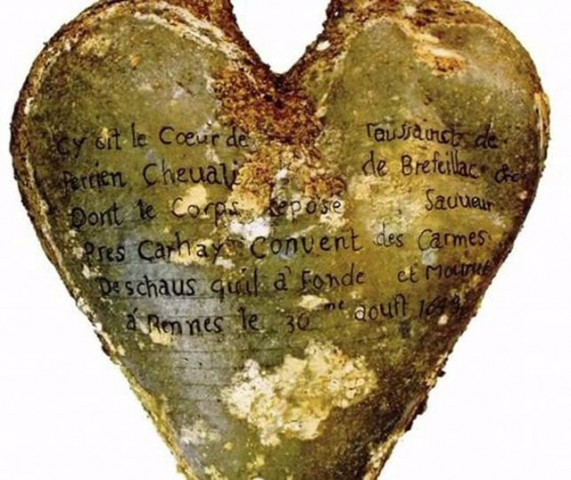Modern science detects disease in 400-year-old embalmed hearts
The earliest of the urns was dated 1584 and the latest was dated 1655

The earliest of the urns was dated 1584 and the latest was dated 1655. PHOTO: REUTERS
American Airlines flight delayed in Texas by swarming bees
Now, roughly four centuries after they were buried, researchers have used modern science to study these old hearts. It turns out three of them bore tell-tale signs of a heart disease very common today.
"Every heart was different and revealed its share of surprises," anthropologist Rozenn Colleter of the French National Institute for Preventive Archaeological Research said on Wednesday.
"Four of these hearts are very well preserved. It is very rare in archaeology to work on organic materials. The prospects are very exciting."
One heart appeared healthy, with no evidence of disease. Three others showed indications of disease, atherosclerosis, with plaque in the coronary arteries. The fifth was poorly preserved.
"Only one heart belonged to a women, and was totally degraded, permitting no study," said radiologist Dr. Fatima-Zohra Mokrane of Rangueil Hospital at the University Hospital of Toulouse.
One of hearts belonged to a nobleman identified by an inscription on the urn as Toussaint Perrien, Knight of Brefeillac, who died in 1649.
His heart had been removed upon his death and was later buried with his wife, Louise de Quengo, Lady of Brefeillac, who died in 1656. Her wonderfully preserved body was found in a coffin at the site, still wearing a cape, wool dress, bonnet and leather shoes with cork soles.
The earliest of the urns was dated 1584. The latest was dated 1655.
Mokrane said an important aspect of the study was the finding that people hundreds of years ago had atherosclerosis.
It is a disease in which plaque made up of fat, cholesterol, calcium and other substances builds up inside the arteries. Plaque hardens over time and narrows the arteries. Atherosclerosis can trigger heart attacks and strokes.
"Atherosclerosis is not only a recent pathology, because it was found in different hearts studied," Mokrane said.
The researchers cleaned each of the hearts, removed the embalming material and examined them with MRI imaging, CT scans and other methods.
Archaeologists excavated the Jacobins convent in Rennes from 2011 to 2013. It was constructed in 1369 and became an important pilgrimage and burial site from the 15th to 17th centuries. About 800 graves were found, Colleter said.
Oregon burglar climbs naked into couple's bed, is chased at gunpoint
The research was presented at a meeting of the Radiological Society of North America in Chicago.


















COMMENTS
Comments are moderated and generally will be posted if they are on-topic and not abusive.
For more information, please see our Comments FAQ